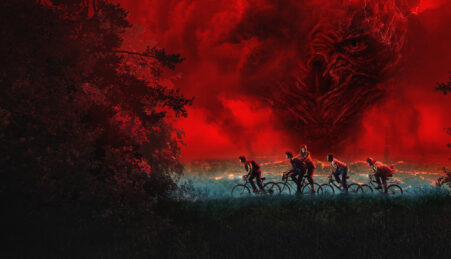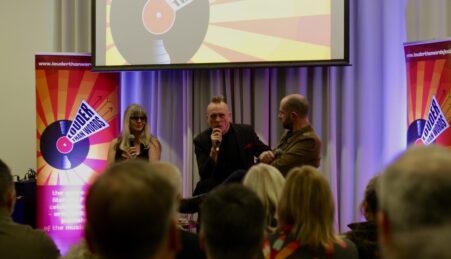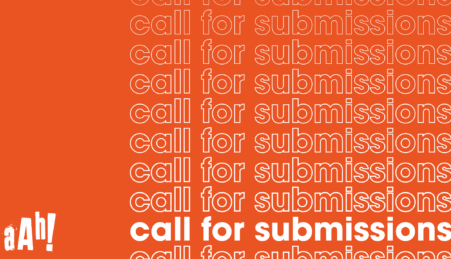By Jacqueline Grima
Academics and research students gathered at Manchester Metropolitan University this week for the latest in the North West Long 19th Century seminar series. The event was hosted by Senior Lecturer in English Dr Emma Liggins.
Emma told Humanity Hallows, “The seminar continues to showcase the research of postgraduates and scholars from the North West, who are working on literature and cultural history between 1790 and the early 20th century. This day-long event considers two fascinating aspects of 19th century culture: the connections between landscape, place and travel and the legacy of the Brontes.”
Tourism proved to be one of the key topics of the day, with speakers discussing Hardy’s Wessex, journeys to Norway, Wordsworth’s Lake District and the Bronte Parsonage, as well as the phenomena of battlefield tourism in relation to representations of the military.
The first speaker was Dr Kathryn Walchester from the Department of English and Cultural History at Liverpool John Moores University. Kathryn’s presentation focussed on the role of the servant in 19th century travel narratives, looking in particular at two texts, Lady Di Beauclerk’s A Summer and Winter in Norway and Mrs Aubrey Le Blonde’s Land of the Midnight Sun.
Kathryn said, “What I want to think about is, not only the practical contribution, but also the textual contribution [of the servants] as they often appear in texts in surprising ways.”
Kathryn talked about how servants who joined their employers on long journeys were expected to be “socially invisible” whilst, in fact, being indispensable to the expedition. Reasons for using servants in travel narratives included to provide a juxtaposition to their employer and, often, to provide comic relief with tales of the challenges of long distance travelling. Kathryn said, “The effect of these anecdotes is to lighten the monotony of the long journey.”
Second speaker of the morning was Anna Burton from the University of Liverpool whose presentation explored the use of landscape in Thomas Hardy’s novel Tess of the D’Urbervilles. Anna looked at how, in the novel, Tess engages with the landscape and how it often bounds or constrains her as well as reflecting the character’s emotions in various parts of the story.
Anna also talked about how Hardy’s novel reflects the so-called picturesque principles of William Gilpin in his 1798 work Observations on the Western Parts of England. She said, “Like Gilpin, Hardy’s vision and knowledge of landscape was not limited to any map.”
The final speaker of the morning session was Joanna Taylor from the University of Lancaster. Joanna’s presentation focussed on the connection between the poet William Wordsworth and the landscape in his 1793 poem ‘An Evening Walk’.
Wordsworth spent much of his time outdoors in his Lake District home, often with his sister Dorothy. Joanna said, “William and Dorothy walked most days for the best part of four decades.”
Joanna went on to discuss how a second version of the poem, written in 1836, took into account the rise of the tourist trade in the Lake District by making Wordsworth’s walk much easier to re-enact. She also looked at how modern Geographical Information Systems (GIS) can now enable Wordsworth’s readers to enjoy a different reading of his poems whilst closely mapping the routes he took on his walks.
After lunch, the seminar looked at the work of the Bronte siblings, in particular Charlotte Bronte. Emma Liggins told us, “In the year of the bicentenary of Charlotte Bronte’s birth, it is particularly exciting to reconsider her writing, and today’s speakers offer new research on her work. We are also particularly pleased to welcome staff from the Bronte Parsonage to this event.”
 The first speaker of the afternoon session was Professor of 19th Century Literature at the University of Chester Deborah Wynne. Deborah’s presentation focussed on Charlotte Bronte’s engagement with the worlds of business and politics through her writing, often written using a male perspective. Deborah said, “Writing, for Charlotte Bronte, was politics. Her imagination was completely bound up in writing politics.”
The first speaker of the afternoon session was Professor of 19th Century Literature at the University of Chester Deborah Wynne. Deborah’s presentation focussed on Charlotte Bronte’s engagement with the worlds of business and politics through her writing, often written using a male perspective. Deborah said, “Writing, for Charlotte Bronte, was politics. Her imagination was completely bound up in writing politics.”
She added, “Bronte was very much attracted in her fiction to the figure of the businessman.”
During the Brontes’ lifetime, a vast amount of societal changes took place, including the passing of the 1832 Factory Act, which limited the use of child labour, and the 1834 Poor Law, introduced to reduce the amount of money spent on the poor. The impact of these changes, as well as conditions in the wool industry that surrounded them, were often explored in the Brontes’ writing, particularly in the stories set in their fictional country Angria.
The next speaker was Dr Amber Regis from the University of Sheffield whose presentation was entitled ‘Relics, Remains and the dramatic afterlife of Charlotte Bronte.’ Amber talked about the rise in popularity in the late 1920s of the so-called biodramas that focussed on the lives of the Bronte siblings. The dramas were produced to such an extent that a ‘National Society for the Suppression of Plays about the Brontes’ was eventually called for and the plays often criticised for their errors and untruths.
Amber went on to discuss Rachel Ferguson’s 1933 play Charlotte Bronte, which satirizes the thousands of so-called Bronte Pilgrims who visit the Brontes’ hometown of Haworth and the Bronte Parsonage which opened to the public in 1928. The play was never staged.
Next, Emma Butcher from the University of Hull looked at the exploration of so-called war trauma in the Brontes’ writing. In their ‘Angria’ stories, the Bronte siblings often collaborated on what Emma referred to as “detailed battlefield narratives” containing characters based on real-life war figures such as Napoleon and Wellington.
Many of these stories and writings looked at the impact of war on those involved, Emily’s poem ‘He could not sleep! The couch of war’, for example, exploring the emotions of a traumatised soldier. Emma said, “The Bronte siblings became aware of war trauma in a culture where it was not sufficiently recognised.”
The last speaker of the event was Kimberley Braxton from the University of Keele whose presentation explored the modern-day erotic adaptations of Charlotte Bronte’s Jane Eyre. Kimberley began by looking at the role of the corset in 19th century fiction and the retellings of it. According to Kimberley, the corset has a dual role in literature, both reflecting the barrier that existed between Victorian society and female sexual desire and standing as a symbol for womanhood and good health. She said, “A woman who did not wear a corset was seen as lazy, sloppy, indecent; indeed, loose.”
She then went on to look at two texts in particular, Jane Erotica, adapted from the original by Karen Rose, and Jane Eyre Laid Bare, adapted by Eve Sinclair. Speaking about the texts, Kimberley said, “They stand as clear evidence of the impact Bronte’s work continues to have.”
For more information about North West Long 19th Century events, see the seminar Facebook page.







Leave a reply